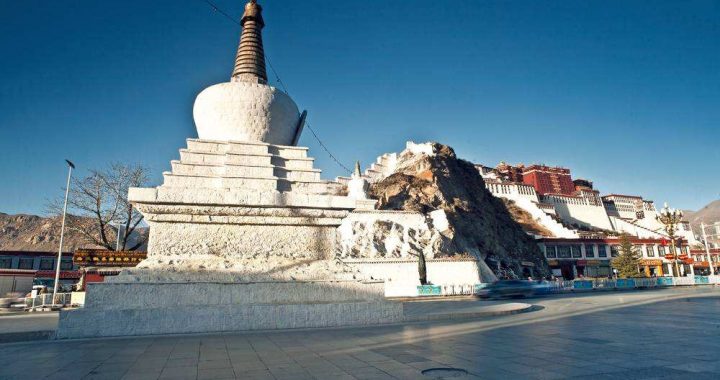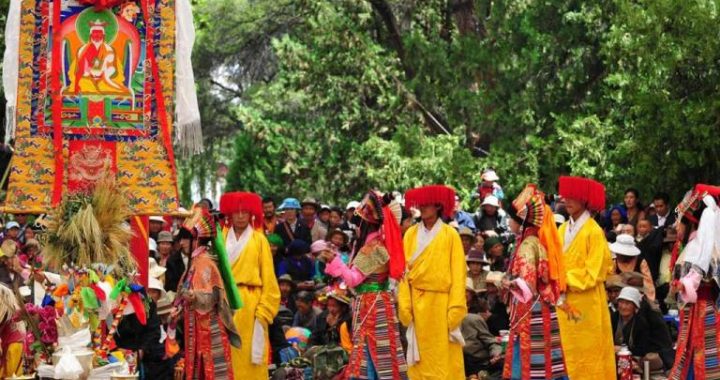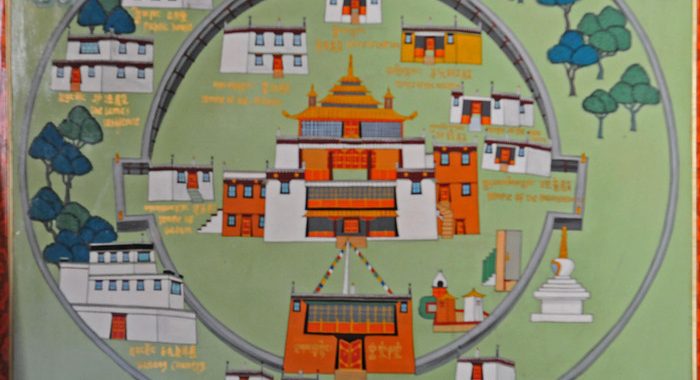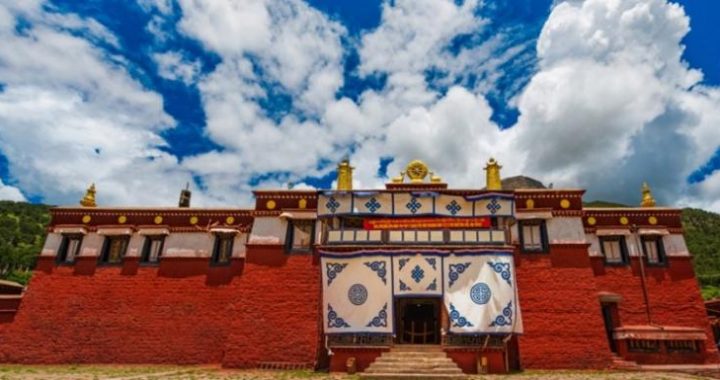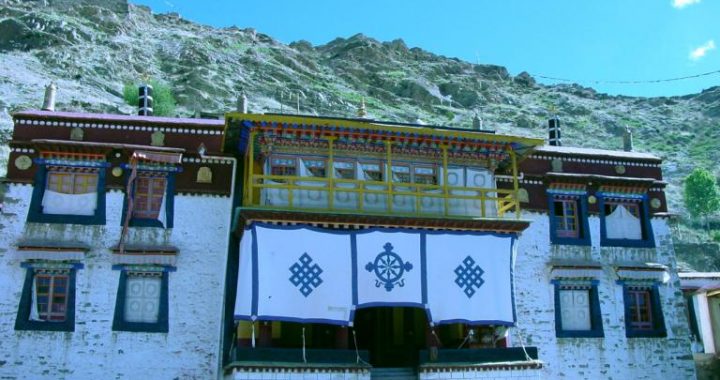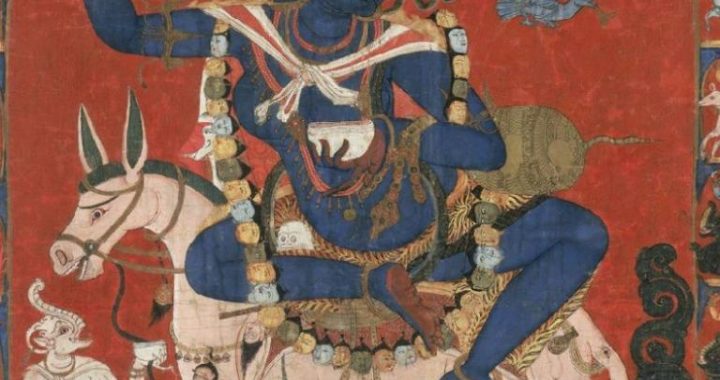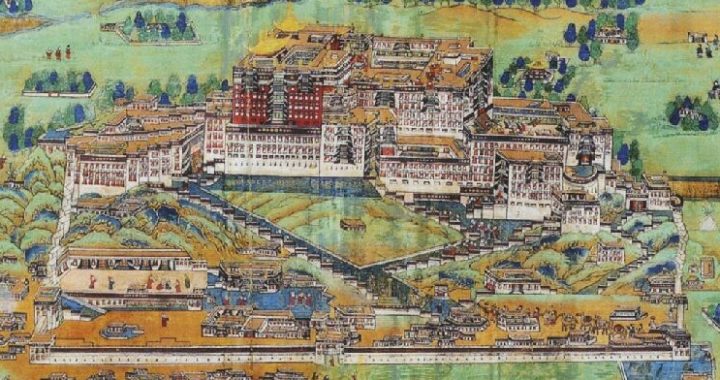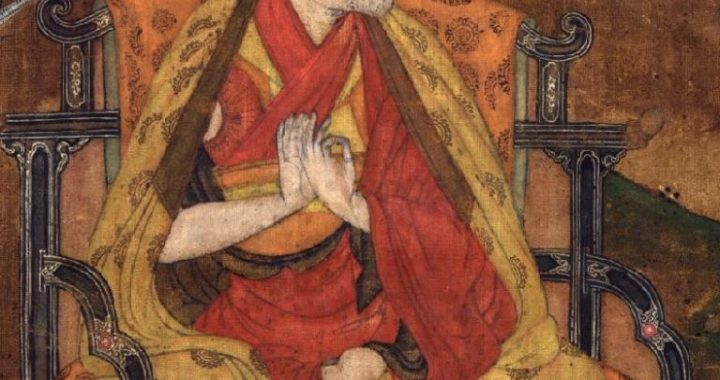Lhasa’s Ocean of Culture
7 min readHeritage:Historic Ensemble of the Potala Palace,Jokhang Temple,Norbu Lingka Surrounded by jagged mountains and steeped in mysticism,Lhasa continues to be defined by Buddhism.Busy markets,sweet incense and flowing yellow robes all greet you as you take your first step into the city.
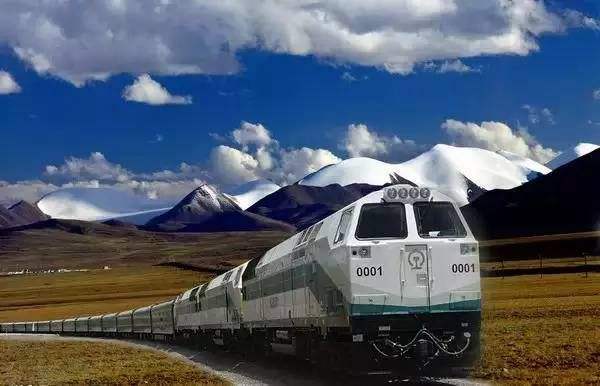
After spending hours gazing out of your airplane window at snow peaked mountains,the clouds finally open up to reveal a vast plain surrounded by mountains.It’s as if you have arrived in another world of clouds,mountains and color.Lhasa is the heart of this Buddhist land hidden away in the mightiest mountain range in the world,the Himalayas.
In Lhasa you’ll find religion blended into every aspect of life-the city is the spiritual anchor of Tibet.Lhasa literally means”holy land”and it’s a well-deserved name.With many holy sites,Lhasa is an important place of pilgrimage for people from allover Tibet who stream into the city from far-flung villages.They’re easily identifiable with their prayer flags and prayer wheels;the signs of devotion abound throughout the land.
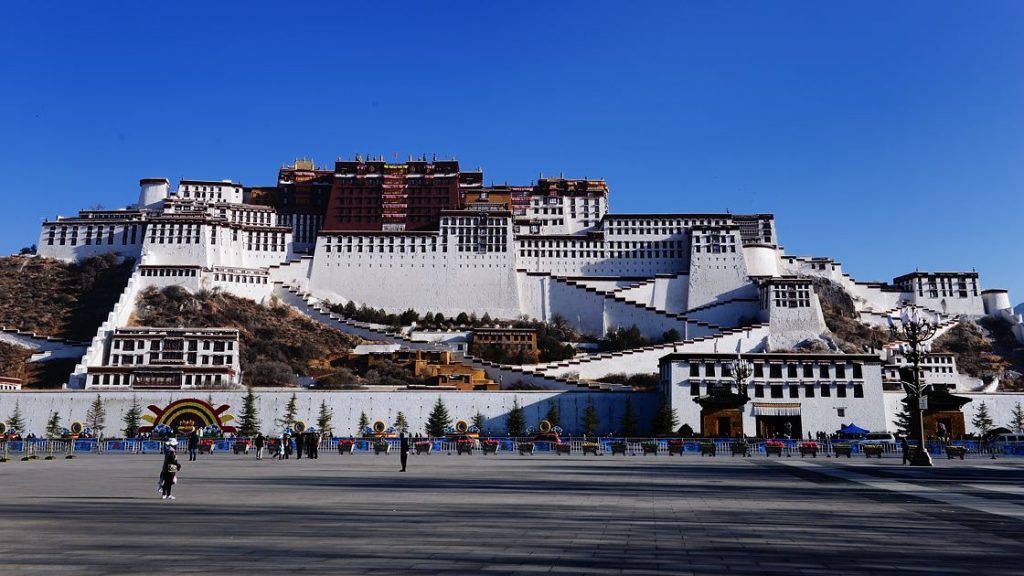
The newly completed Qinghai-Tibet railroad is the world’s highest railway(qingzong tielu)It’s easy to forget that you’re already at an altitude of nearly 12,000 feet(3,650 m)as you look at the towering mountains that surround Lhasa,but that’s why Tibet is also known as the“rooftop of the world.”The 58-mile(93 km)trip from the airport to the city follows the winding path of the scenic Lhasa River,past families working in fields of barley and yellow canolo flowers and young monks walking along the roadside.Vivid colors are set against the mountains,surrounded by ever-changing clouds and the deep blue sky.
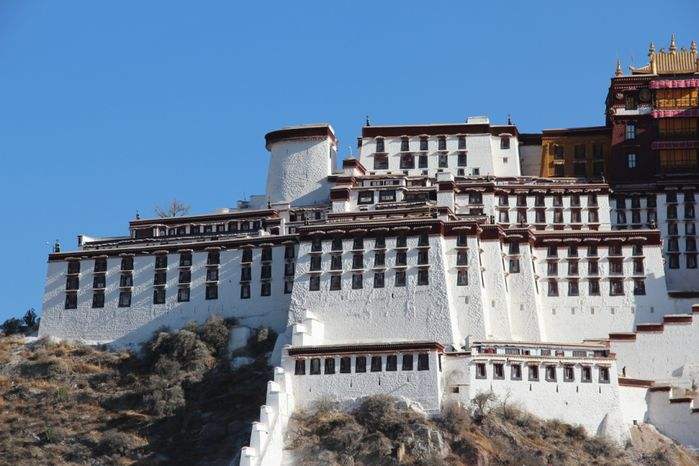
Lhasa itself is a noisy vibrant city,a mixture of old and modern.The city has an eclectic mix of people,Tibetans with their colorful clothes,Sichuan migrants with their spicy cuisine,as well as explorers,mountaineers and tourists from all over the world.
There’s a saying describing Tibetans,”that if a Tibetan can talk,he can sing;if he can walk,he can dance.”This aptly describes their lively and vibrant culture.
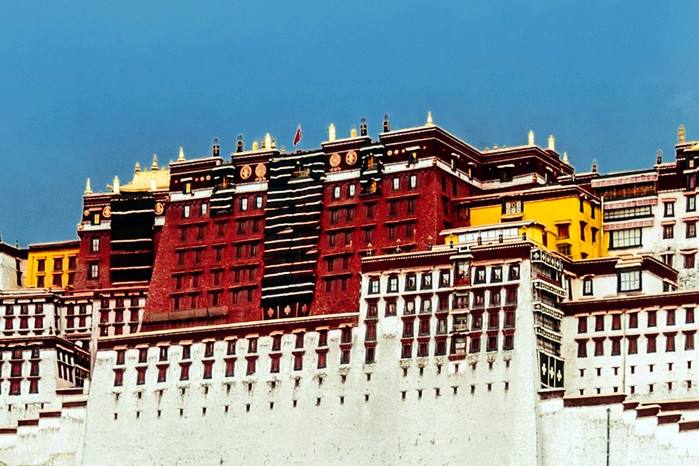
Over 1,300 years old,Lhasa dates back to the 7th century AD when the colorful Tibetan figure Songtsen Gampo built his palace in Lhasa.In 1642,the 5th Dalai Lama also made Lhasa his capital and rebuilt the architectural wonder,the Potala Palace(budala gong),on top of the ruins of Songtsen’s old abode.Today the Potala Palace continues to dominate the Lhasa skyline and is the most visible of all of the city’s sights.It offersone of the best views of Lhasa and the surrounding area,especially in the early morning.
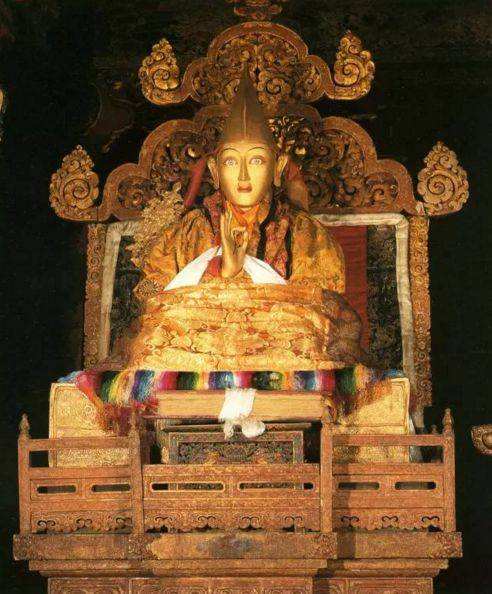
The Potala Palace is comprised of the White Palace(bai gong),which was the living quarters of the Dalai Lama and the central religious Red Palace(hong gong).It’s in the Red Palace that you can move through narrow corridors,dimly lit by many small butterlamps,to see the jewel-encrusted tomb stupas of the 5th and the 7th to 13th Dalai Lamas.
The many chapels and former apartments give an insight to what life must have been like centuries ago in this theocratic sanctuary.
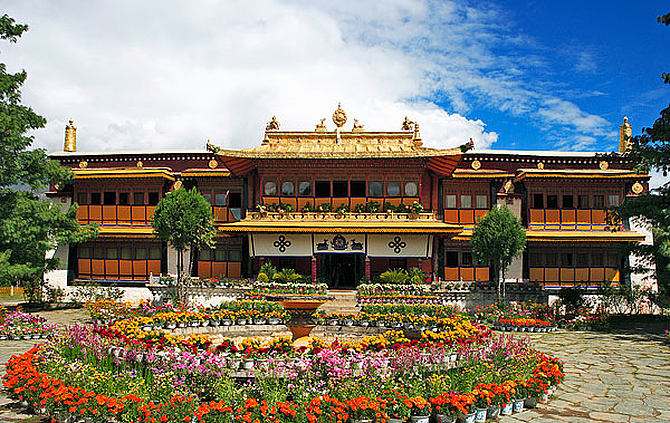
The Potala Palace is Lhasa’s best-lknown landmark.(budalagong)
Some of Tibet’s richest treasures are held in the Potala Palace,particularly in the western part of the Red Palace.One especially dramatic sight is the jewel-encrusted tomb of Lobsang Gyatso(luosangjiacuo),the 5th Dalai Lama.His gilded 48.7-foot-tall(14.85 m)tomb stupa contains 8,203 pounds(3,721 kg)of gold as well as 10,000 precious pearls and stones.One of the most beautiful works of Buddhist art is also here,the mandala of the Wheel of Time which contains 200,000 pearls as well as coral,turquoise andgold thread.Mandalas are a pictorial representation of the Buddhist universe;not only are they beautifully intricate,they’re also deeply symbolic.They’re an aid in teaching young monks while older monks use them as a visualization tool for meditation.
Spending a day taking photos of people in the lhasa market-all the various peoples and goods makes for a collage of colors.
Watching dawn from the mountain above the Drepung Temple.
Looking out at the starlit sky and silhouetted mountains from the top of one of the open rooftop restaurants in The Norbu Lingka(luobu linka),built in 1751 as the summer residence of the Dalai Lama,lies 1.9 miles(3 km)west of the Potala Palace.As harsh winters gave way to spring,a grand procession of Lamas and officials accompanied the Dalai Lama from the Potala Palace to his summer home.Norbu Lingka,which means“jeweled garden,”is a fitting title for the large compound of buildings and extensive gardens.Successive DalaiLamas continually expanded the palace and up until 1959,commoners weren’t allowed within its walls.Today this once forbidden palace is ideal for quiet strolls and lazy afternoons.
The palace contains some fabulous murals fusing Tibetan history and myth.Some of the finest murals are found at the back of the woods in the Golden Lingka(jinse linka)and Chensal Potrang(jinse pozhang )One of the best places to view modern day Lhasa and its diversity of culture is in the bustling Barkhor(bakuo jie),a section of the old city.Here,the Barkhor Market(bakuojie shichang)has all manner of goods from turquoise jewelry to meditation beads,colorful traditional Tibetan clothes and yak wool sweaters.Here you can watch groups of monks draped in their maroon and saffron robes mingling with Tibetans from remote areas wearing long boots,sporting daggers and large turquoise necklaces.
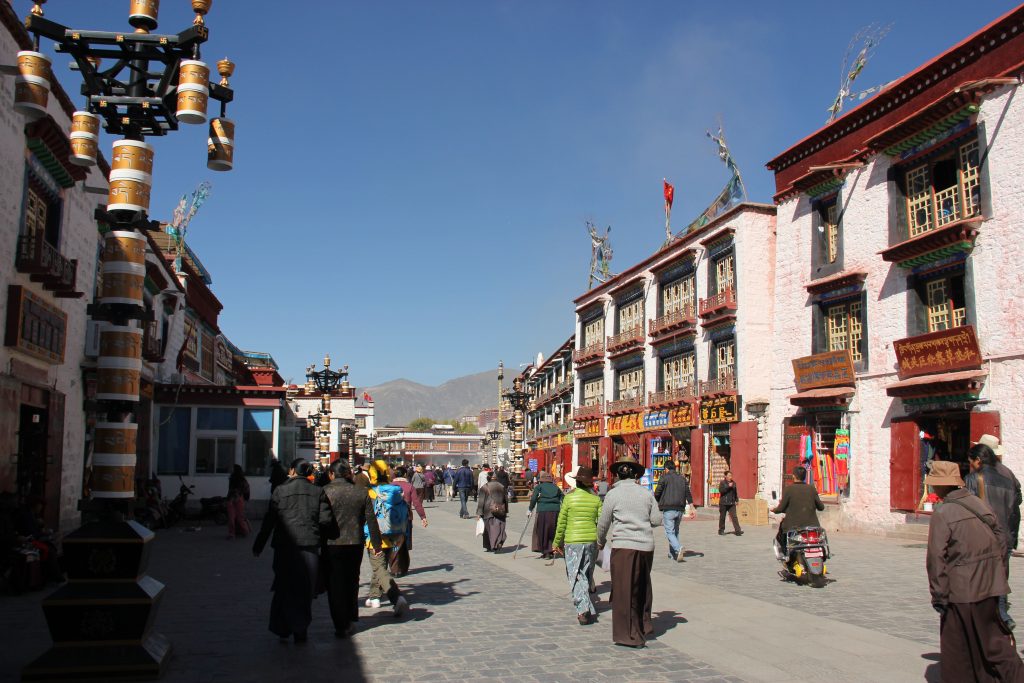
Long streams of pious Tibetan pilgrims walk clockwise in Barkhor chanting prayers withtheir meditation beads,spinning their prayer wheels or performing full prostrations as they circle the Jokhang Temple(dazhao si ),one of Tibet’s holiest temples.Thes devout pilgrims wear yak leather gloves and aprons to protect their hands as they slide over the rocky ground,their reverent prostrations atoning for bad deeds performed in the past.Prostrating pilgrims journey from all over Tibet to worship here.
The Jokhang Temple,situated in Barkhor Square(bakuojie guangchang),is the noisy and colorful heart of Lhasa.It was built in the 7th century when King Songtsen Gampo wanted to build a temple to house two famous statues brought by his brides from Tang dynasty and Nepal.Being unable to decide where to build the structure,he left it up to fate and threw his ring in the air and promised to build a temple wherever it landed.It landed in a lake,striking a rock where a white stupa miraculously emerged;the lake wasfilled with rocks and here the Jokhang Temple was constructed.The main entrance to the Jokhang is marked by a large golden,eight-spoke Dharma wheel flanked by two deer.The spokes of the wheel represent the Buddhist eightfold path to enlightenment and the deer serve as a reminder that Buddha gave his first sermon in a deer park.
Dim corridors lined with statues of fierce and benign guardians lead to the innermost shrine.This is the home of the oldest and most precious object in Tibet-the gold statue of Sakyamuni Buddha(shijiamouni jinxiang )brought by Princess Wencheng of theTang dynasty to Tibet 1,300 years ago as part of her dowry.Inside the inner chamber,mellow butter lamps create shadows that dance across his features.Also in the innermost shrine is a 19.7-foot-tall(6 m)tall statue of Padmasambhava,the Buddha of compassion and the half-seated figure of Maitreya,Buddha of the future.If you find the narrow corridors stifling then head to the roof.Monks often lead prayers here and it’s a great spot to watch modern Lhasa life in Barkhor Square or just sit in the afternoon sun.

About 5 miles(8 km)west of Lhasa,just outside the city,is the Drepung Monastery(zhebang si).This jumble of white buildings stands out against the majestic Mount Gambo Utse(genpeiwuzi shan).The monastery was once the largest in Tibet and where each reincarnation of the Dalai Lama received his training.Built during the 15th century,it’s now home to about 700 monks.
Another important temple to the north of Lhasa is the Sera Monastery(selasi).
It continues as a training center set at the foot of Tatipu Hill where young monks train ir the debating garden and prepare for scholastic examinations by holding mock debates.InLama Buddhism,the debating garden is a whetstone where the mind is sharpened.After the garden,climb the wall and walk up the hill to see the beautiful rock art,depicting life-size blue bodhisattvas.A short climb is rewarded with a landscape view of Lhasa and the expansive mountains that ring the city.Here you’1l see the sky stretching from the tallest mountains to the heavens.
The unfurling of a massive Buddha tapestry is a time for celebration.
Wherever you are in Lhasa,you’re always surrounded by colorful people,striking natural scenery,humbling mountains,flowing rivers and fields of green,gold and yellow.
Although some of the main temples can be busy,just turn the corner or wander off for a few minutes and you’ll quickly find yourself in a picturesque rural Tibetan scene out of a postcard.

